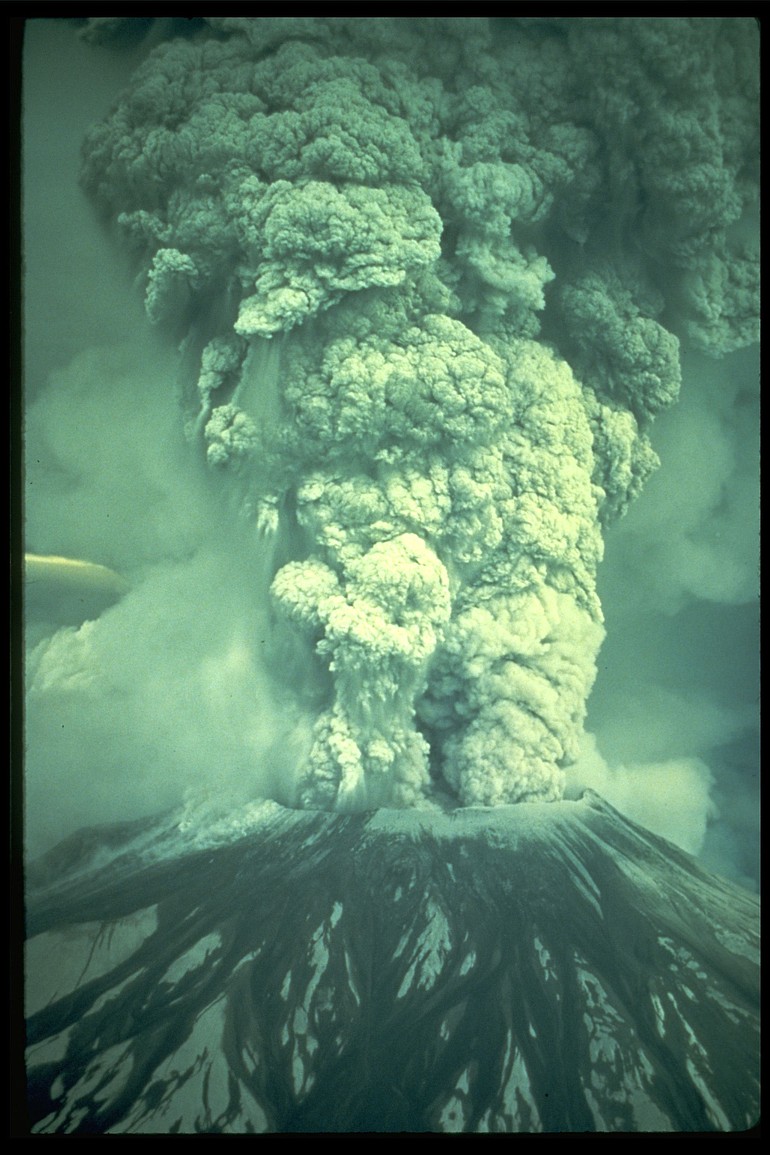Originally published May 19, 1980.
Mount St. Helens, the once-serene, cone-shaped peak that dominated the skyline northeast of Clark County and stood guard over the beautiful Spirit Lake recreation area, erupted with a force likened to an atom bomb Sunday, killing at least six and leaving 29 missing.
The mountain, about 45 miles from Vancouver’s back door, blew at 8:32 a.m. Sunday with an explosion that was heard 200 miles away in Canada but was unheard throughout the Vancouver-Portland area. The blast left the snow-capped mountain about 1,300 feet shorter than it was two days ago, spread death and destruction throughout the Toutle River valley north and west of the mountain and sent a gigantic ash cloud to the east.
By late morning today (May 19, 1980), that cloud had fanned out across several Northwest and Rocky Mountain states and was expected to continue all the way to New England.
Also by late morning, eight persons had been found. It was unknown whether they were among the 29 reported missing earlier. Five were picked up by rescue helicopters about eight miles from the volcano and three others were found four to five miles northwest of the mountain in the Fawn Lake area. No names were immediately available.



